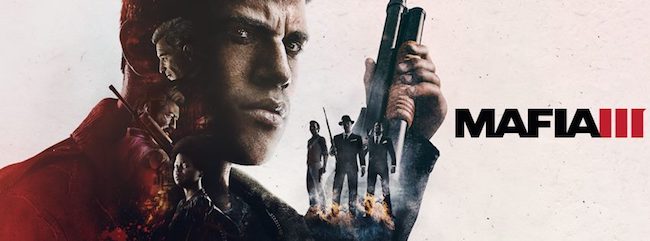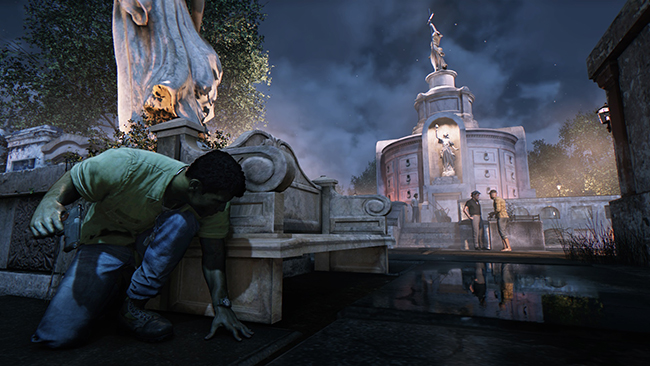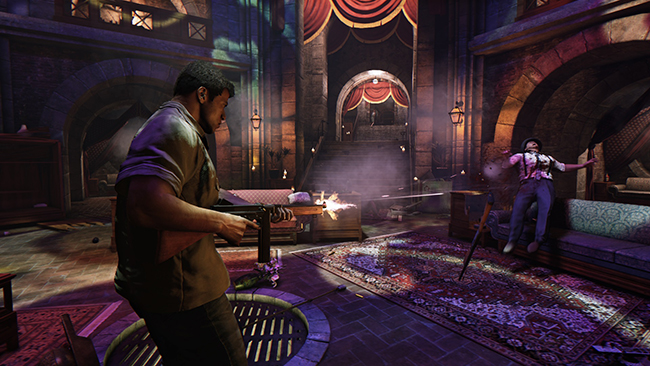
Mafia III is a unique and ambitious title that breaks away from the norm of its previous entries and opts for a new setting and era. After the well-written but basic sandbox shooter Mafia II, the developers at Hangar 13 have taken a chance by shifting the plot from 1940s Italian-American mob drama to the late ’60s in a New Orleans-inspired city called New Bordeaux.
It captures the essence of the American south with its vibrant city streets, classic cars, psychedelic rock and colourful language. When I say colourful language, it’s because of the portrayal of African-American people in that time period. Mafia III’s approach to the storytelling is very mature, historically accurate, and radically offensive a lot of the time. Although, there is a warning message at the beginning of the game which notes that this is an attempt to be faithful to the era.

The story starts with Lincoln Clay, having just returned to the city New Bordeaux from Vietnam as a Special Forces soldier. Lincoln meets and helps his surrogate father, Sammy, who’s is also the head of the local black crime organisation. I loved how the game begins as it patiently sets up the characters, and builds up to a brutal twist in the first act. Lincoln’s first job is to rob the Federal Reserve with the son of Mafia don, Sal Marcano. After the bank heist, it leads on to a meeting with Marcano asking Lincoln to take over from Sammy, stating he’s too old for the role. Instead of betraying his surrogate father, Lincoln politely refuses but promises to continue doing hard work for them to help repay the debt that Sammy owes. After the heist with all groups celebrating their success, a violent double-cross by the Sal Marcano mob changes the course of the story leaving Sammy and his group murdered, their home destroyed, and Lincoln injured after taking a bullet to the side of his head.
The first few hours of Mafia III are well-structured with cinematic cutscenes, brilliant scripting, and excellent voice acting that shines through due to realistic facial animations from all the characters. I was amazed at how no detail was missed, from the subtle movements of each character expression to the way they carry themselves. Mafia III arguably has the most lifelike looking character models in any video game to date, and it supports the story in a big way to sell the believability.

What I also love are the documentary-style scenes that play out between the gameplay and storyline, flash forwarding to an impending investigation into Lincoln’s activities. The documentary scenes allow the narrative to play with the entire Lincoln Clay timeline for a refreshing outlook on future events and significant moments in his life of crime. The story delivery is brilliant offering a filmic experience that is both intriguing and engrossing.
Unfortunately, the first few hours of the introduction and the story are the best moments of Mafia III. After the double-cross with the Marcano, the real gameplay begins and lets you wander freely in its open world, but instead of continuing as a captivating story-driven crime drama, it becomes a lacklustre third-person shooter with tedious and repetitive missions.
In saying that, I will say the core mechanics are quite solid. With hard-hitting guns, it’s satisfying taking down enemies with pump-action shotguns and pulling off headshots. Stealth is optional, fortunately, because the AI in Mafia III is so unintelligent it allows you to sneak around and stab enemies in the neck or throat without any hassle. It’s a very boring way to play the game. The car controls respond well, with each vehicle handling with a good amount of weight that makes drifting around corners a blast. The vehicles are also a perfect balance for car chases, too, with the police AI offering a decent challenge.

I found the problem with the main missions are that they seemed too controlled and stuck to a repetitive formula. You would expect a large open world game to provide a variety of creative and well thought out missions that work as a whole to wrap the characters and storyline together, but this is not the case here. Instead, the missions in Mafia III are essentially the same three or four missions over and over, offering little to no variety throughout.
Another component of the game is taking control of rackets located across the various areas of New Bordeaux. The goal is to shut down Sal Marcano’s empire, starting from the very bottom. With each low-level mob boss you kill, or by destroying deliveries of contraband and robbing supply stashes, it creates financial damage to the Mafia’s organisation. Each area of the city hosts an array of crimes and corruption where you’ll encounter drug dealers, pimps, and arms smugglers, but each of these missions are one and the same and don’t play out any differently. You either kill enemies, destroy supplies, or steal money, but every single mission you complete is built to bring the empires financial strength down to zero.
After completing a lot of racket missions and taking out the leader for a particular district, you take control that district and must then hand it over to one of your three underbosses. The underbosses who you meet throughout the campaign are Cassandra, head of the Haitian Mob; Burke, the Irish boss; and Vito Scaletta, an ex-Mafia member. I enjoyed the meetings with the three of them to discuss business as it finally added an element that felt fresh to the series. I just wished they put the effort in their scenes within the main missions as that’s an area I felt required the most creative attention.

I wish Mafia III was the exciting and progressive open world crime game it promised to be, but it doesn’t even come close to rivalling the likes of genre juggernauts such as Grand Theft Auto. It’s sad, too, because I enjoyed the previous games in the series and was looking forward to the prospects of a fresh and edgier story set in the 1960s. Mafia III delivers excellent groundwork for an interesting storyline, introducing bold and likeable personalities and demonstrates what a well-written script can bring to a video game. However, it lacks engaging gameplay elements and open world content that encourages players to see the story mode through to completion. It’s essentially a huge grind. The game had so much potential, but Mafia III is a classic case of style over substance. The location was vibrant and full of life with a blockbuster storyline, but paired with lazy open world gameplay, it ultimately falls miles short of its full potential.











